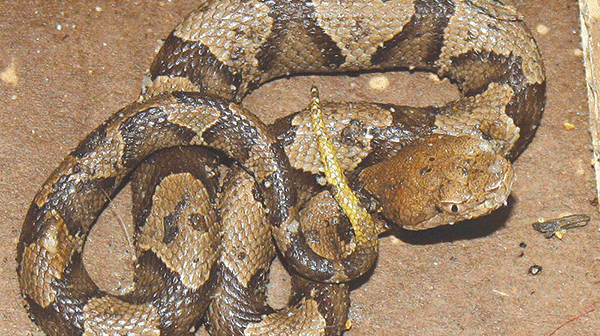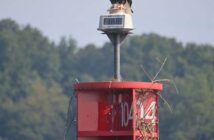They slither and hiss and can be found in brush, debris and in woodlands or yards.
It’s summer and snakes abound. Some folks admire them and some despise them, but whatever your take on snakes, killing one in Virginia can result in a $500 fine.
There are numerous types of snakes in Virginia, but only three are venomous: copperheads, moccasins and rattlesnakes.
“Snakes are an unregulated species,” said David Hennaman, an officer with Virginia Department of Game and Inland Fisheries’ conservation police. “There is no set season on them. It is illegal to kill them.”
Self-defense is an exception. For example, if a snake is in your home or on your property, and you are threatened, you may kill it. “But is a snake slithering across a yard a true threat?” Hennaman asked.
Hennaman said killing a snake is a Class 3 misdemeanor and one can be fined up to $500 if charged and found guilty. However, being charged and fined is rare.
Rattlesnakes and moccasins are only found in certain areas of the state. Rattlesnakes are found in the far southeast and western parts of the state. Moccasins live only in the southeast in an area between South Chesterfield (Point of Rocks area) and Hopewell.
Copperheads are found statewide. They get their name from the copper red in color on their heads, although some may even have a gray tinge on the body depending on locality. All copperheads have an hourglass pattern on their backs, while the belly and the sides underneath the chin are cream colored.
The copperhead is also referred to as makasin (Algonquin), dumb rattlesnake, red adder, red eye, red snake, white oak snake, deaf snake, beech-leaf snake, chuck head, copper adder, copper-bell, deaf adder, hazel head, popular leaf snake, thunder snake and harlequin snake.
Copperheads can live up to 18 years and females usually live longer than males. Males will battle each other if they cross paths.
Adult copperheads can grow to 4 feet long. Juvenile copperheads have a yellow tip on their tail that fades as they get older.
Copperheads have live births, which may contain one to a dozen or more babies. Baby copperheads are on their own after birth; even a newborn copperhead has venom and can inflict a painful bite, according to Copperhead-snake.com.
A copperhead may eat frogs, toads, salamanders, insects, birds, lizards, small snakes and mammals.
On the other hand, copperheads are considered top-notch cuisine for eagles, hawks, owls, opossums and raccoons. King snakes – which are non-venomous – eat copperheads.
Most snakes are harmless and provide a valuable service around your home in the way of pest control (snakes eat rodents), according to the state game department. Their presence around your property or in your house may indicate a rodent problem.
The department suggests eliminating possible snake habitat near your home. Have your house checked for rodent problems. If you can eliminate the food source, snakes will go elsewhere.
Remove rock and brush piles and keep grassy areas mowed short near the house. This will eliminate attraction for mice and cover for snakes. If a snake enters your home, check the foundation of the house thoroughly. Seal around pipes, vents, or other places that may provide small openings both for rodents and snakes. Also, check the roof for overhanging vegetation. Snakes are good climbers and can enter through the attic if trees or shrubs are nearby.
For more information, go to dgif.virginia.gov.


